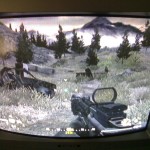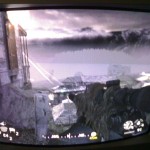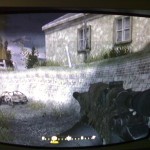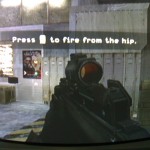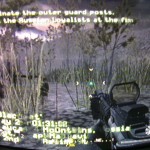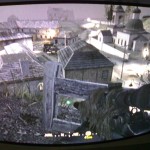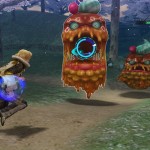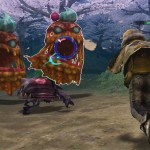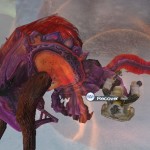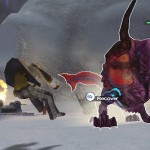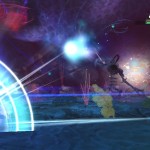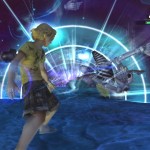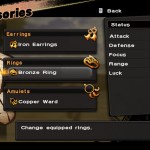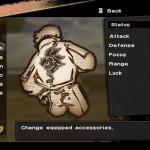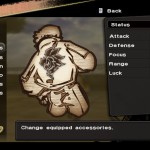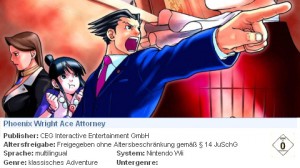XSEED Games Announces New Game Name – Fragile Dreams: Farewell Ruins of the Moon
Posted 14 years ago by Brian in News, Wii | 1 Comment
Adventure RPG Brings Dramatic Post-Apocalyptic World to Life
Torrance, Calif., (November 5, 2009) –XSEED Games announced today that FRAGILE: FAREWELL RUINS OF THE MOON will be published in North America under the new name FRAGILE DREAMS: FAREWELL RUINS OF THE MOON. Developed by NAMCO BANDAI Games and tri-Crescendo, and released by NAMCO BANDAI Games as Fragile: Farewell Ruins of the Moon in Japan, FRAGILE DREAMS: FAREWELL RUINS OF THE MOON will be available in North America in early 2010, exclusively for Wii™.
FRAGILE DREAMS: FAREWELL RUINS OF THE MOON finds protagonist Seto exploring an eerie and abandoned world, seemingly populated only by haunting ghosts and demons. Players utilize the Wii Remote™ as a flashlight to illuminate Seto’s surroundings, solve puzzles and interact with the environment. Gamers are immersed in an intensely cinematic experience where desolate, strangely beautiful atmospheres filled with gorgeous graphics and stunning lighting effects are brought to life by an emotional musical score. Explore the narrative of a lonely and lost soul as he encounters memorable characters and discover the back story behind scavenged items that provide insight on people’s last days before the apocalypse.
New off-screen shots and first video of Call of Duty: Modern Warfare: Reflex Edition
Posted 14 years ago by Brian in News, Wii | 13 Comments
Update: Changed the video to a direct-feed version
Both the video and shots below are off-screen, but it’s amazes me that this is how we’re seeing the first footage of the game in action. We’re still waiting for a trailer, Activision!
Iwata: Wii Vitality Sensor is more than a simple pulsimeter
Posted 14 years ago by Brian in News, Wii | 3 Comments
Like most of Nintendo’s previous Wii peripherals, when the Wii Vitality Sensor was announced, many people were skeptical of the accessory’s functionality. The Vitality Sensor is still pretty mysterious, as we only truly know that it has the ability to “sense the user’s pulse and a number of other signals being transmitted by their bodies.” However, Satoru Iwata promised investors at the Q&A session of the company’s latest financial briefing that it is more than a simple pulsimeter.
“If Wii Vitality Sensor is simply a pulsimeter, we did not need such a grandiose announcement. It is a tool to analyze various biological signals by scanning the pulse, in order to make something invisible visible. The point with that is you can figure out your current conditions. I believe many of you have figured out with “Wii Fit”, by weighing yourself every day you could figure out how the weight would change according to what you had done. Personally I have figured out how dining-out exactly affects my weights. And there are still more invisible factors, which Wii Vitality Sensor can make into something visible, by putting your finger on that every day.
I have to refrain from disclosing too much to keep the surprises of announcement; but please note that Wii Vitality Sensor is not a simple pulsimeter. I have a strong feeling something fun will appear around this gadget, and am planning to put it as one of the next year’s main topics.”
Final Fantasy Gaiden: Four Warriors of Light Japanese Castle gameplay
Posted 14 years ago by Brian in DS, News | 0 comments
Nintendo talks HD
Posted 14 years ago by Brian in News, Wii | 9 Comments
HD graphics was a huge topic discussed during Nintendo’s Q&A session of the company’s latest financial briefing. We’ve posted the pertinent quotes below.
“I believe that we should take the most appropriate balance. We are not too much concerned about if the technology itself is the state-of-the-art or rather old-fashioned. If we can find out the most appropriate medium, between SD and HD, and flexibly move around them depending on the game’s contents, it will be good, I think.” – Genyo Takeda, General Manager, Integrated Research & Development Division
“As long as my way of making games are concerned, all I am concerned about technologies is, we probably cannot swim against the tide. The customers’ tastes will become more and more refined. Even today, many customers who have seen HD once say they cannot go back to SD. On the other hand, quite a few of us are accepting 5.1 channel even though they are not true 5.1 channel or embracing HD even though they are not true HD…So, if we try to intensify that portion, if we are simply intensifying what is actually SD to look like HD with the hardware support, it can be understood rather easily. So, development costs associated with HD graphics will have to further increase.” – Shigeru Miyamoto
“…Regarding the question of SD or HD, it must depend on each software. For example, we have to ask ourselves if HD is really necessary to develop Wii Fit. Won’t HD be better for the games like Pikmin? The developers should choose the most appropriate graphical format depending on the software they make. To Nintendo, our theme is how we can prepare the SDK library to cater to the needs of the developers, with which the developers can more easily develop their games. In fact, Nintendo has been working with such mission.” – Shigeru Miyamoto
“Next, let me talk a bit from an engineer’s viewpoint…I hate to tell this as Mr. Takeda is sitting next to me today, but in the days of Nintendo64, we were not able to make the program run properly without us making a lot of extra and seemingly unnecessary efforts. However, Nintendo GameCube and Wii are made so that programmers do not have to beat our brains out or making many extra works, so I feel that the programming has become fairly easy. Mr. Takeda himself has learned from Nintendo64 and has been specifically focusing on how possibly the hardware people can make the platform which gives the least amount of hardship to software engineers. I would like to believe that he will keep this spirit for any future products.” – Satoru Iwata
“Each company and each developer must have its own opinion about how they develop games as well as how they conduct their businesses. Some companies have internally consistent opinions, and some others have different opinions among the developers and engineers as to HD or more sophisticated graphics. When a company believes in the need of advanced graphics in order to differentiate itself from the others, which is commonplace, the development cost naturally increases…It can easily be understood that making profits is becoming harder and harder….As I explained by comparing the memory sizes of a NES game and Blue-ray as an example, the development costs are increasing for the third parties. Recognizing the circumstance, our position is to cooperate wherever appropriate in order to realize the most desirable results.” – Shinji Hatano, General Manager, Marketing Division
Zelda team “preparing gorgeous graphics” for Zelda Wii
Posted 14 years ago by Brian in News, Wii | 14 Comments
This quote comes from Shigeru Miyamoto at the Q&A session of Nintendo’s latest financial briefing. We posted this information a few days ago, but now it’s clearer and complete.
“…On developing the recent Zelda for DS, I found out that one of Zelda’s core appeals is its uniqueness. Of course we are preparing gorgeous graphics for the sake of users’ anticipation for a grand role-playing adventure. But what I believe is very important is the realistic, actual feeling players have experienced themselves; the feeling to have really been on an adventure, to have explored the unknown terrains, to have solved the puzzle through trial and errors, to have themselves grown through various experiences! In that sense, a personal sense of creativity is becoming important among us. We have assembled one of the most creative team for the recent Zelda for DS, and we want to be as creative as possible for upcoming Wii Zelda.
FFCC: The Crystal Bearers screenshots
Posted 14 years ago by Brian in News, Wii | 0 comments
Media Create software sales (10/26 – 11/1)
Posted 14 years ago by Brian in DS, News, Wii | 5 Comments
1. [PS3] Bayonetta – 135,000 / NEW
2. [DS] Final Fantasy Gaiden: Four Warriors of Light – 115,000 / NEW
3. [PS3] Tekken 6 – 103,000 / NEW
4. [PSP] Persona 3 Portable – 94,000 / NEW
5. [DS] Pokemon HeartGold/SoulSilver – 87,000 / 2,844,000
6. [WII] Wii Fit Plus – 81,000 / 780,000
7. [360] Bayonetta – 64,000 / NEW
8. [DS] Tomodachi Collection – 53,000 / 1,519,000
9. [DS] Inazuma Eleven 2: Kyoui no Shinryakusha – Fire / Blizzard – 41,000 / 527,000
10. [WII] Super Robot Taisen Neo – 26,000 / NEW
Capcom believes they are the best third-party publisher of cross-platform content
Posted 14 years ago by Brian in General Nintendo, News | 2 Comments
This information comes from Capcom’s Senior Manager of Community, Seth Killian, who was responding over at Capcom-Unity to someone who said that the company favors Nintendo consoles:
“IMO, Capcom is the third-party publisher with the BEST cross-platform support out there. Fans of any particular console will always want something for the other consoles, and I understand that, but since all the consoles are successful in today’s market, we’re actively supporting them all (the love is pretty evenly spread even to handhelds).
While I know it’s easy to do the ‘you did that game on console X and not on my console Y!!!’, we really are trying and I think we’re much better at it than the other publishers, so please look at the question in terms of overall industry context rather than just in terms of specific games.”
It’s hard for me to complain about Capcom’s Nintendo support now that we know Okamiden is in development for the DS. There are also a number of other DS and Wii titles to look forward to including Monster Hunter 3, Ghost Trick, and Tatsunoko vs. Capcom. With that said, I’ll admit that there have been a few flops here and there (Dead Rising: Chop Till You Drop comes to mind).
USK says Phoenix Wright: Ace Attorney heading to the Wii
Posted 14 years ago by Brian in News, Wii | 5 Comments
Well, this is quite a surprise! According to the USK, Germany’s equivalent of the ESRB, the Phoenix Wright series is coming to the Wii in some capacity. Unfortunately, the USK rating did not specify if this will be a WiiWare or retail release. The news hasn’t been officially confirmed by Capcom yet, but I don’t see how this classification could be incorrect. And remember, Capcom’s Christian Svensson said a few months ago that the series could “technically” land on Nintendo’s console.
